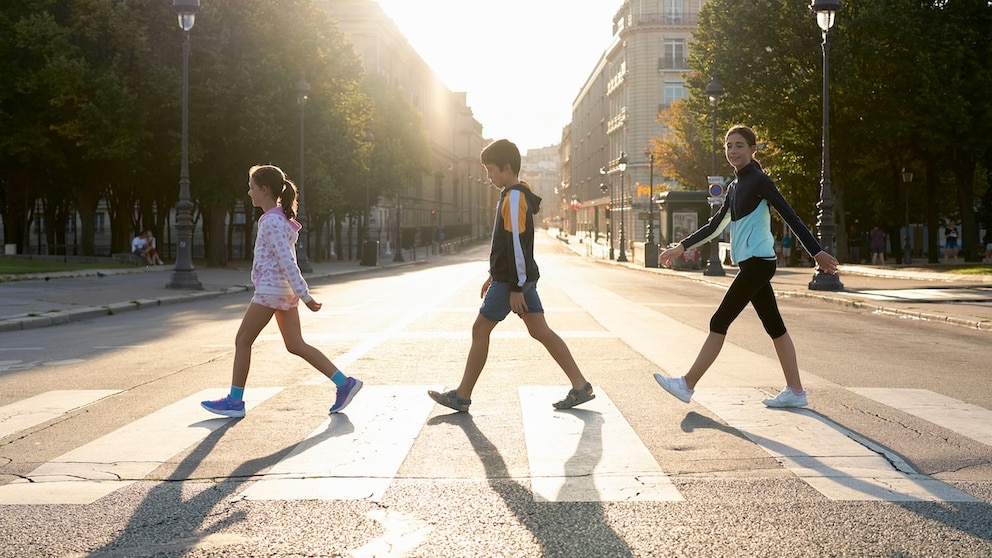Europe's Most Family-Friendly City Revealed!

There are cities where parents feel uneasy about letting their children travel alone to school or afternoon classes. Then there are those where such concerns are less justified—at least according to an analysis by the “Clean Cities Campaign” initiative. The city deemed the most child-friendly in Europe is also renowned for numerous other qualities, appealing to adults as well. TRAVELBOOK presents the complete ranking.
The “Clean Cities Campaign” advocates for healthy and climate-friendly mobility in European cities. More detailed information about the initiative will follow later in the text. In the current ranking , “clean” is synonymous with “child-friendly” and specifically refers to an acceptable level of air pollution, “safe speed limits, and a protected cycling infrastructure.” According to the organizers, these factors are crucial for the safety and well-being of young people. However, not only children benefit from safe streets, but also older people, pedestrians, and cyclists. Keeping cities “clean” in this regard is thus “a ‘win-win strategy’ for the entire society.” And where has this worked particularly well? In Paris!
Paris is the most child-friendly city in Europe according to the ranking
Admittedly, for most people, the thought of Paris initially evokes other associations. It is known as the city of love, lights–and art! The renowned “Time Out” magazine recently ranked it as the best city in the world for culture ( TRAVELBOOK reported ).
But Paris can apparently do even more. As part of its “School Streets” program, the city plans to create around 300 traffic-calmed school streets by 2026. So-called school streets are closed during drop-off and pick-up times in the vicinity of schools–a concept not well known in Germany, as the ranking will show. At least one-third of these school streets in Paris are to be extensively redesigned and greened. These measures not only reduce traffic and air pollution around schools but also enhance the urban environment overall, according to the justification for Paris’s ranking. There are already said to be 230 school streets there.
Places 2 and 3
Amsterdam takes second place in the ranking. In the three main evaluation criteria–school streets, safe speed limits, and protected cycling infrastructure–the canal city scores about 63 percent of the possible points. Antwerp is close behind in the overall ranking, securing a good third place.
Nevertheless, it is a city in 16th place (out of 36) that the “Clean City Campaign” particularly highlights: Bologna. It is the first major Italian city to have introduced extensive 30 km/h zones as part of the “Città 30” program. The aim was to reduce the number of traffic accidents, decrease environmental pollution, and make public spaces safer and more inviting for everyone. And it has succeeded. Within a year, the number of traffic fatalities in Bologna has decreased by an impressive 49 percent. At the same time, more and more Bolognese are reportedly switching to bicycles or public transportation.
The bottom of the rankings–and German placements
The bottom ranks of the ranking are occupied by the Romanian capital Bucharest (34th place), Lisbon, Portugal, and Sofia in Bulgaria as the last. Sofia receives only 1 percent of the total possible score. There are reportedly no school streets, but you might find a street or two with speed limits or marked bike paths.
German cities are also represented. Munich ranks 12th with 45 percent of the possible points, Berlin 15th, and Cologne 17th. Hamburg just makes it into the top 20 with 39 percent. It is noticeable that Germany has hardly any school streets compared to the other ranked countries. However, the major cities score a few points in the speed limit category.
The 20 most child-friendly cities in Europe at a glance
- Paris, France
- Amsterdam, Netherlands
- Antwerp, Belgium
- Brussels, Belgium
- Lyon, France
- Helsinki, Finland
- Barcelona, Spain
- Bristol, England
- Oslo, Norway
- Ghent, Belgium
- Copenhagen, Denmark
- Munich, Germany
- Vienna, Austria
- Greater London, England
- Berlin, Germany
- Bologna, Italy
- Cologne, Germany
- Hamburg, Germany
- Manchester, England
- Warsaw, Poland
More information about the “Clean Cities Campaign”
The “Clean Cities Campaign” is a Europe-wide alliance of more than 70 civil society organizations, environmental groups, and initiatives from 14 countries, including France, Italy, the United Kingdom, Spain, and Poland. The initiative aims to make European cities cleaner, safer, and more livable. The focus is on a shift to emission-free mobility. This includes the introduction of car-free zones, the expansion of bike and pedestrian paths, and the consistent promotion of public and shared transportation. The campaign is funded, among others, by the Allianz Foundation, which specifically supports the development of a European “Climate Hub,” as noted on the website . Additional funding comes from foundations such as the European Climate Foundation or ClimateWorks, as well as from the EU Commission.
Regarding the current ranking, it is not entirely clear what criteria were used to select the participating cities. TRAVELBOOK has requested this information from the organizers and will provide it here as soon as it is available.
The post The Most Child-Friendly City in Europe appeared first on TRAVELBOOK .
Post a Comment for "Europe's Most Family-Friendly City Revealed!"
Post a Comment